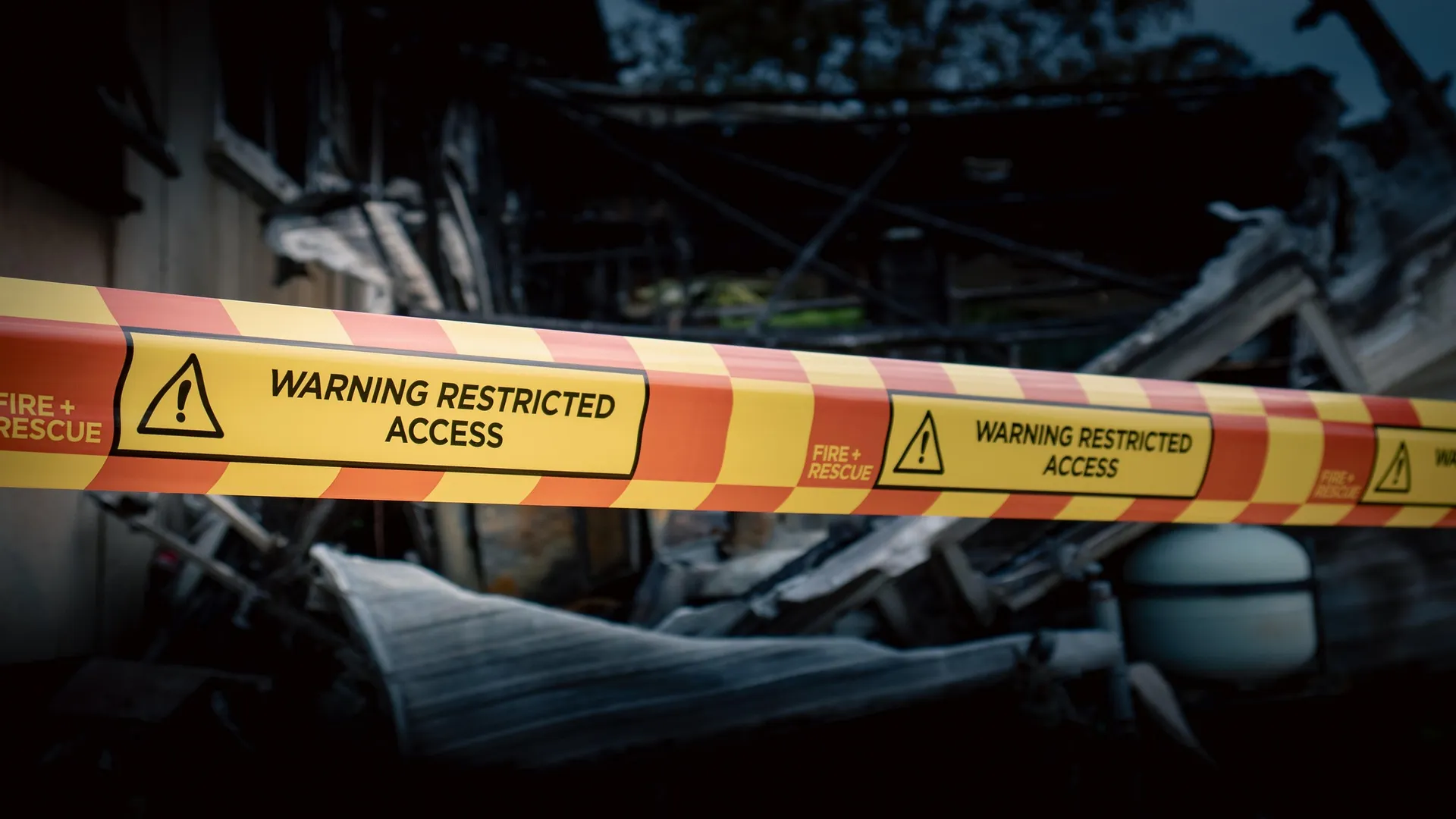Asbestos is a material that was once widely used in construction because it was fire-resistant, heat-resistant, and durable. However, over the years, it became clear that asbestos is dangerous for our health, and many countries have banned or severely restricted its use. Despite this, older buildings still contain asbestos materials, and one of the hidden dangers in these buildings is Asbestlint.
Asbestlint refers to tiny, microscopic asbestos fibers that can be released into the air, often going unnoticed because they are too small to see with the naked eye. Unlike larger pieces of asbestos, which are easier to spot, Asbestlint can stay suspended in the air for hours, making it easy for people to inhale without realizing it. Inhaling these tiny fibers can cause serious health problems over time. Let’s dive deeper into what Asbestlint is, why it’s dangerous, and how to avoid exposure.
What Is Asbestlint?
Asbestlint is made up of very small asbestos fibers that break off from materials containing asbestos, often when those materials are damaged. These fibers can float in the air and are usually too tiny to see. Because they are so small, they can easily be inhaled into the lungs, where they can stay for years, causing serious health issues.
Asbestos was used in many building materials, such as insulation, floor tiles, ceiling tiles, and pipe wrappings. Over time, these materials can start to break down, especially if they’ve been damaged by water, aging, drilling, or construction work. When that happens, tiny asbestos fibers are released into the air as asbestlint. This dust can easily spread around a building, especially through air ducts, and create a hidden danger.
Why Is Asbestlint Dangerous?
The danger of Asbestlint lies in the fact that it can be invisible and go unnoticed until it’s too late. Unlike larger pieces of asbestos that may be visible, Asbestlint is often mistaken for regular dust or lint. However, this dust can be filled with harmful asbestos fibers, which can cause serious damage to your health.
When asbestos fibers are inhaled, they can enter your lungs and remain there for a long time. Over time, these fibers can cause various health problems, including:
1. Asbestosis
Asbestosis is a disease that occurs when the lungs become scarred from inhaling asbestos fibers. This scarring makes it difficult to breathe and can lead to coughing, chest pain, and shortness of breath. It is a chronic condition that worsens over time and can be very serious or even fatal in some cases.
2. Lung Cancer
Long-term exposure to asbestos can also lead to lung cancer. The asbestos fibers can irritate the lung tissue, which causes abnormal cell growth and can eventually lead to cancer. Lung cancer caused by asbestos may take years or even decades to develop, and it can be very difficult to treat once diagnosed.
3. Mesothelioma
Mesothelioma is a rare and aggressive cancer that affects the lining of the lungs, heart, or abdomen. It is strongly linked to asbestos exposure, and symptoms often don’t appear until many years after exposure. Mesothelioma is usually fatal, and the chances of recovery are very low.
4. Other Breathing Problems
In addition to these major diseases, asbestos exposure can cause other breathing problems such as pleural plaques (thickening of the lining around the lungs) and chronic obstructive pulmonary disease (COPD). These conditions can make it harder to breathe and affect your quality of life.
Also Read- Gldyql – Meaning, Uses, Benefits & Applications Explained
How Does Asbestlint Get Released Into the Air?
Asbestlint is released when materials containing asbestos are damaged or disturbed. When asbestos-containing materials (ACMs) like insulation, floor tiles, or pipe wrap start to break down, they can shed tiny fibers that become airborne. This can happen in several ways:
- Aging and Wear: Over time, asbestos materials naturally begin to deteriorate. This is especially true for buildings that are decades old. As materials degrade, they can release small fibers into the air.
- Water Damage: If asbestos materials get wet, whether from leaking pipes or flooding, they become more fragile and more likely to release fibers.
- Drilling or Sanding: When people drill, sand, or disturb materials that contain asbestos, they can cause fibers to break off and float in the air.
- Construction or Renovation: During construction or renovation projects, workers might unknowingly disturb asbestos materials. This could release harmful asbestos dust into the environment, putting everyone in the building at risk.
- Improper Maintenance: If materials containing asbestos are not properly maintained, they are more likely to deteriorate and release fibers. Lack of inspection and care can increase the risk of exposure.
Why Is Asbestlint Hard to Detect?
One of the biggest dangers of Asbestlint is that it is almost impossible to see with the naked eye. It looks like regular dust or lint, which is why people often don’t realize they are being exposed to it. Many people believe that as long as they don’t see any big chunks of asbestos, they are safe. However, this is not true. Asbestlint can float in the air without being noticed, and it only takes a small amount to be inhaled and cause harm.
This is especially dangerous in older buildings where asbestos was widely used. In many of these buildings, the materials are starting to break down, and asbestlint can be floating around without anyone realizing the risk.
Where Can You Find Asbestlint?
Asbestlint is most commonly found in buildings that contain asbestos materials, especially those built before the 1980s when asbestos use was common. Some of the most common materials that can release asbestlint include:
- Insulation: Asbestos was commonly used as insulation in walls, ceilings, attics, pipes, and boilers.
- Ceiling Tiles: Older ceiling tiles, particularly those in buildings constructed before the 1980s, may contain asbestos.
- Flooring: Vinyl floor tiles, glue, and mastic used to install floors often contain asbestos.
- Pipe Wrapping: Asbestos was used to wrap pipes to protect them from heat. These materials can easily degrade and release fibers.
If these materials are damaged or disturbed, they can release asbestlint into the air, putting everyone in the building at risk.
How to Protect Yourself from Asbestlint Exposure
If you live or work in an older building, it’s important to take steps to protect yourself from asbestlint exposure. Here are some things you can do:
1. Get a Professional Inspection
If you suspect that your building may contain asbestos, it’s important to have a professional asbestos inspector come in and check. They will be able to test materials for asbestos and identify any areas where there may be a risk of exposure. If Asbestlint is detected, they can recommend safe methods for dealing with the situation.
2. Don’t Disturb Asbestos Materials
If you know or suspect that materials in your building contain asbestos, avoid disturbing them. Don’t attempt to drill, sand, or remove any materials that may be asbestos-containing unless you are a trained professional. This will prevent the release of dangerous fibers into the air.
3. Hire an Asbestos Removal Professional
If asbestos-containing materials need to be removed or replaced, always hire a licensed asbestos removal expert. These professionals know how to safely remove and dispose of asbestos without releasing dangerous fibers into the air.
4. Proper Ventilation
If you are working in an area that may contain asbestos, ensure that the space is well-ventilated. However, ventilation alone is not enough to prevent exposure, so it’s important to also take other safety measures.
5. Regular Inspections and Maintenance
If you live or work in an older building, it’s essential to have regular inspections and maintenance done to check for asbestos materials. Proper maintenance can prevent asbestos from breaking down and releasing harmful fibers.
Also Read- Unpacking Lyposingrass: A Digital Enigma Revealed
Conclusion
Asbestlint is a hidden and dangerous form of asbestos exposure. It consists of tiny, microscopic asbestos fibers that can float in the air, often going unnoticed until people start to experience health symptoms. Exposure to Asbestlint can cause serious diseases, including asbestosis, lung cancer, and mesothelioma. Because it looks like regular dust or lint, it’s difficult to detect, making it a silent threat in many older buildings.
To protect yourself from Asbestlint, it’s important to regularly inspect and maintain older buildings, hire professionals for testing and removal, and avoid disturbing asbestos-containing materials. By understanding the risks and taking proper precautions, we can reduce exposure and keep our environments safe.
FAQs
1. What is Asbestlint?
Asbestlint refers to tiny, microscopic asbestos fibers that are released into the air when asbestos-containing materials (ACMs) break down or are disturbed.
2. How can I tell if my building contains Asbestlint?
You can’t see Asbestlint with the naked eye, as it looks like regular dust or lint.
3. What are the health risks of inhaling Asbestlint?
Inhaling Asbestlint can cause serious health problems over time.
4. How does Asbestlint get released into the air?
Asbestlint is released when asbestos-containing materials degrade or are disturbed. Common causes include aging, water damage, sanding, drilling, or construction work.
5. What should I do if I think there is Asbestlint in my home or workplace?
If you suspect that Asbestlint may be present, it’s important to take precautions. Do not disturb any materials that might contain asbestos.




